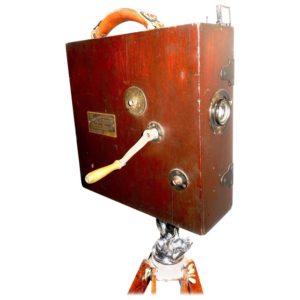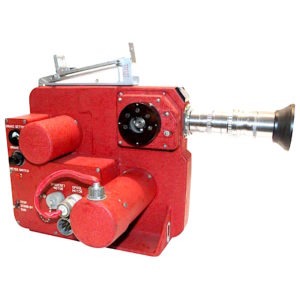POLAROID VINTAGE MODEL MID CENTURY ORIGINAL VERSION ANTIQUE INSTANT CAMERA COLLECTION
POLAROID VINTAGE MODEL MID CENTURY ORIGINAL VERSION ANTIQUE INSTANT CAMERA COLLECTION
Inquire for pricing
POLAROID VINTAGE MODEL MID CENTURY ORIGINAL VERSION ANTIQUE INSTANT CAMERA COLLECTION
Offered here for the first time and for your consideration, is this large recently acquired collection of antique, collectible and rare original generation Polaroid instant full sized bellows camera models.
This group of collectible original Polaroid instant Cameras is selling one each for a range of prices depending on rarity and condition. The price shown is for ALL ITEMS of this collection.
This deep collection consists of many of the very early models built between circa 1948 and 1959.
NOTE: Our intention is to sell each of these iconic artifacts, one at a time, for prices ranging between $495.00 and $1995.00 each !
The solid, old world, construction is astounding.
The look is pure deco and the rarity and value is increasing.
The early models have no plastic and are a true example of mid century ‘by hand’ craftsmanship.
Each is sold placed on a slab base of polished travertine stone. Other bases such as glass and wood are also available at no extra charge. Please inquire.
Please see the enclosed photos to view all the different models available and then inquire on prices, which will be based on the many individual factors for each camera.
These cameras used the original 1948 Polaroid Picture Roll Land Film, no longer available.
The individual pieces in this collection are in excellent condition, working correctly and can be sold either with all original ‘as found’ dust and patina residue included or preservation cleaned, at no extra charge, with our special time tested preservation formulae that enhance and preserve but do not change the original patina or as found condition.
This extremely large collection was a rare find for us and we are so pleased to be able to offer them to our clients and collectors.
These type of early cameras always sell out quickly when we get them, so order yours today. This collection represents very top tier examples in a state of excellent presentation condition.
Individual camera prices will range from $495.00 to $1995.00 each, depending on vintage, serial number, condition and rarity. Each unit comes with a base of your choice, but we like the travertine base best. Some clients choose to display these wth no base.
Some cameras have original paperwork and factory accessories.
Some have the original bills of sale.
Some have the original factory leather cases.
We also have some lesser vintage but later 1960’s Polaroid cameras, priced accordingly. Please ask for more information.
About Edwin H. Land (1909–1991):
He was the innovative inventor responsible for conceiving of and perfecting instant photography. Known simply as Polaroid, the system revolutionized traditional photography by compressing darkroom processes into an integrated film unit and producing a final photograph in the seconds following the click of a camera shutter.
Beyond this single remarkable invention, Land produced other transformative technologies such as the sheet polarizer, and he contributed broadly to federal research activities during World War II and the following decades. For his scientific and business achievements, Land was admired by scientists, corporate leaders, and government officials alike.
In 1943, during a vacation in Santa Fe, Land took a photo of his daughter, Jennifer, who was then three years old. The girl asked her father why she couldn’t see the photo right away—at the time, photographs had to be developed professionally, a process that often took several days. Land was immediately taken by the concept of instant photography and set off on a long walk to think through the idea.
Years later, he recalled, “Within an hour, the camera, the film, and the physical chemistry became so clear” that he immediately set off to speak with his patent attorney. Polaroid’s work with crystals, dyes, and polymers in the development of polarized products provided the company the expertise it needed to begin working on the project before the war was over.
The instant photography system Land imagined was a radical departure from traditional film processing. In conventional photography, a photographer took a series of photographs on a roll of film and returned it to a laboratory later for development. There, a technician would work inside a darkroom, a specialized laboratory that contained the materials—chemical baths to start and stop the development, washing and drying equipment, and other supplies—needed to develop film and produce photographic prints. The entire process took several minutes in the laboratory and usually several days from the time a photographer dropped off the film until a print was ready for retrieval.
Land’s system required a new kind of camera and film, a system that would compress all of the components of a conventional darkroom into a single film unit, to be processed in under a minute after being ejected from the camera. If successful, the system would allow users to evaluate and share images moments after they had been taken, a transformational change from traditional photography.
The key to Land’s system was a film unit that contained both the negative film and a positive receiving sheet joined by a reservoir that held a small amount of chemical reagents (including sodium hydroxide, a strong base) that started and stopped film development. The reservoir, called a pod, was sealed within the film unit, making the entire process appear dry for the consumer even though it used liquid developers. When the film was released from the camera, a pair of rollers at the mouth of the camera bit the pod, rupturing it and allowing reagent to be forced evenly across the film, coating the entire image area. As the reagent spread, various chemicals worked to remove the unexposed silver halide from the negative, release it onto the positive layer at the top of the film unit, and reduce it, producing the final image.
From 1943 through 1946, the instant camera was kept secret at Polaroid’s laboratories as multiple challenges were resolved. The entire process required suitable color intensity and sharpness. The film unit had to be shelf-stable from the time it left the factory to when consumers clicked their camera buttons, and it had to work at a wide variety of temperatures, from desert heat to winter cold. Finally, after development, the unit had to stop all the reactions to create long-lasting photographs. Each problem was solved with precise control of the film’s chemistry.
In fewer than five years, Polaroid had invented and mastered all of the necessary new technologies to demonstrate Land’s instant photography system. Land made the first public demonstration of instant photography on February 21, 1947, during a meeting of the Optical Society of America in New York City. Newspapers covering the event called the invention “revolutionary.” The following year was dominated by resolving challenges the company faced in bringing the system from the laboratory to commercial-scale manufacturing.
The first Polaroid camera, called the Model 95, and its associated film went on sale in 1948 at a department store in Boston. The cameras sold out in minutes. The Model 95 produced only sepia-toned images, and after the film emerged from the camera, photographers had to wait exactly 60 seconds before peeling off the negative backing of the image.
Customers loved the system’s promise and historical significance of nearly ‘instant’ photographic results.




















